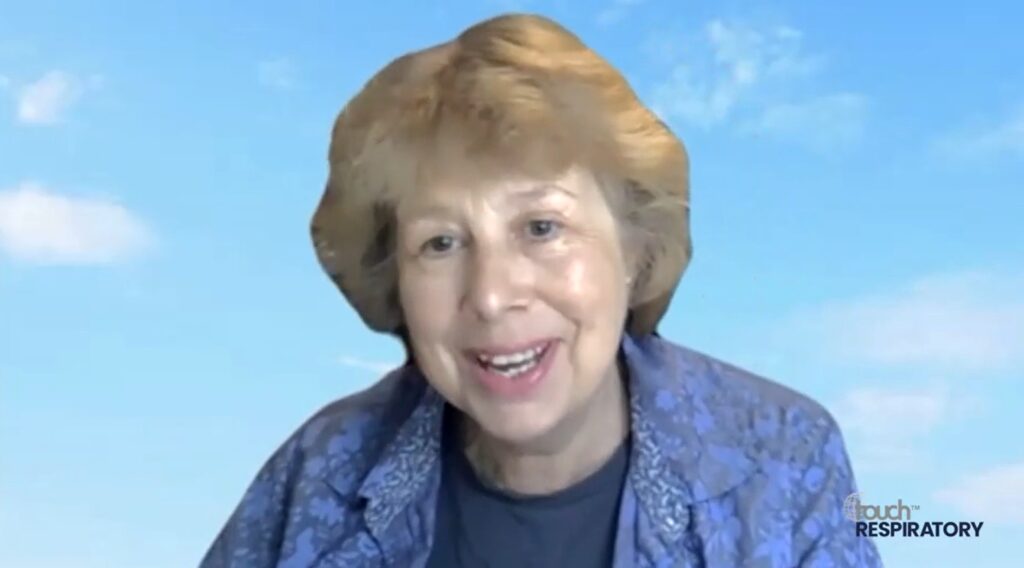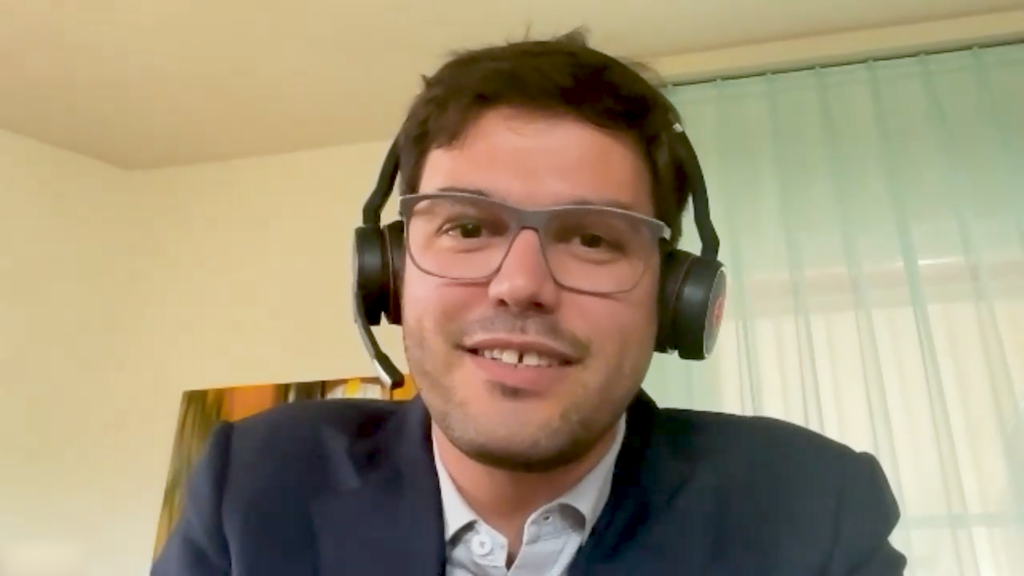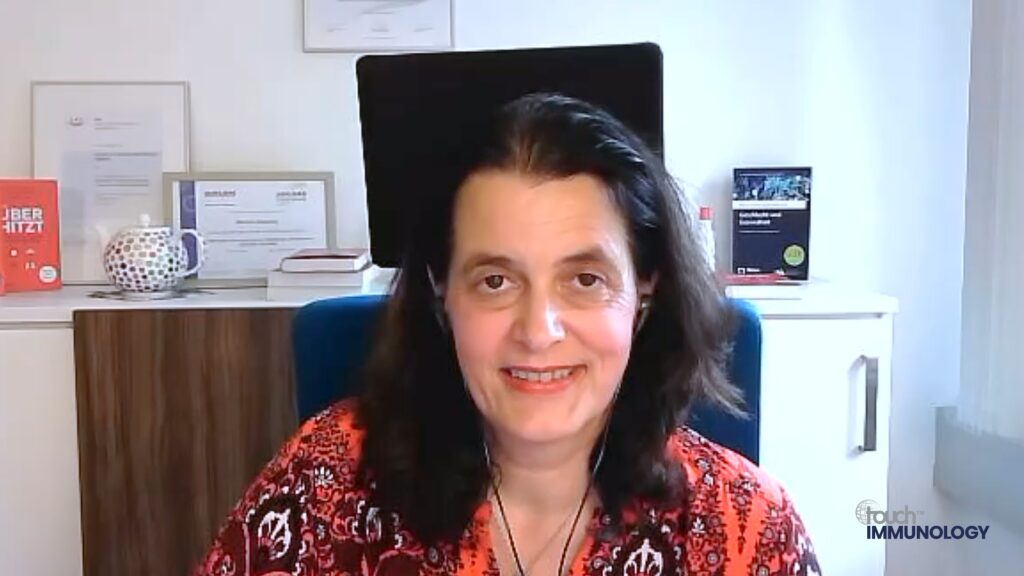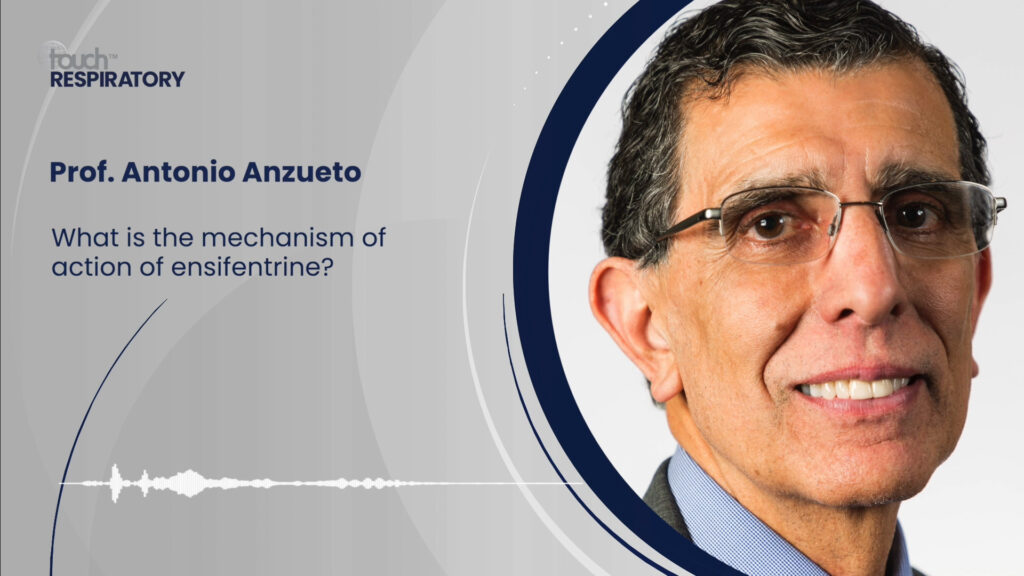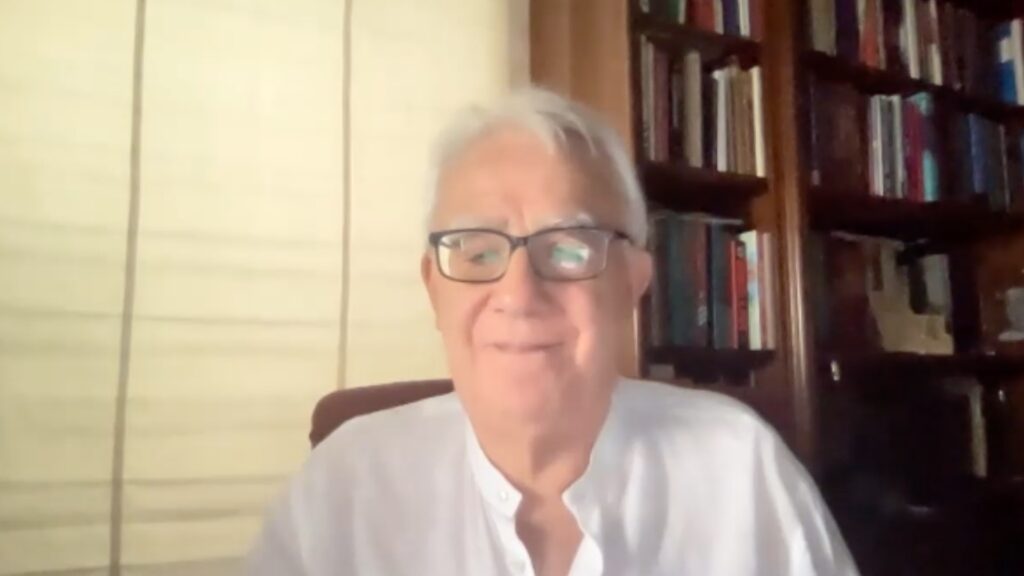Ensifentrine, is a dual phosphodiesterase 3 and 4 inhibitor recently investigated in the phase 3 ENHANCE trials for the treatment of COPD. touchRESPIRATORY were delighted to speak with Prof. Antonio Anzueto (South Texas Veterans Healthcare System, University of Texas Health, San Antonio, TX, USA) around the bronchodilators already available for the treatment of COPD, the mechanism of action of ensifentrine and where ensifentrine would fit in the treatment paradigm if approved in this indication.
The abstract ‘Effect of Ensifentrine, a Novel PDE3 and PDE4 Inhibitor, on Lung Function, Symptoms and Exacerbations in Patients With COPD: The Enhance Trials.‘ was presented at ATS 2023, 19-24 May 2023.
Questions
- What bronchodilators are already available for the treatment of COPD and what are their limitations? (0:17)
- What is the mechanism of action of ensifentrine? (0:53)
- If approved, where would ensifentrine fit in the treatment paradigm for COPD? (2:16)
Disclosures: Antonio Anzueto discloses consulting for Astra/Zeneca, GlaxoSmithKline, Theravance, Viatrix, and Verona Pharma; serving on advisory boards for Astra/Zeneca, GlaxoSmithKline, Theravance, Viatrix, and Verona Pharma; receiving honoraria/honorarium from Astra/Zeneca, GlaxoSmithKline, Theravance, Viatrix, and Verona Pharma and participating in speaker’s bureaus with Astra/Zeneca, GlaxoSmithKline, Theravance, and Viatrix.
Support: Interview and filming supported by Touch Medical Media Ltd. Interview conducted by Victoria Jones.
Filmed in coverage of the ATS Annual Meeting.
Click here for more content on COPD.
Transcript
What bronchodilators are already available for the treatment of COPD and what are their limitations? (0:17)
So we have over the last twenty years developed bronchodilators. The class are long-acting beta agonists, long-acting anticholinergics, and inhaled corticosteroids. First, we developed them separate, then we start combining the long acting bronchodilators and notice that the efficacy was significantly improved and then recently, we have been able to combine with classes of medication with single inhaler, and we’ve had more significant improvement in lung function and reduction in exacerbations.
What is the mechanism of action of ensifentrine? (0:53)
Ensifentrine is a novel dual molecule, at the same time in the last 20 years that we have developed these long acting bronchodilators, we’ve been looking for molecules that can have bidirectional action that can be both bronchodilator as well as anti-inflammatory. It had been around thirty to forty medications who were developed. Two or three made it to phase two, none made it to phase three, so ensifentrine is the first, a phosphodiesterase 3 and 4 inhibitor that not only have been very successful in phase two, they have completed the phase three trial and it shows very efficacious. So, it works as a bronchodilator, which dilates the airway by increasing C and P. It’s a really good anti-inflammatory, has significant reduction in eosinophil, neutrophil, has effects on fibroblast, microphages, and the third characteristics of these dual phosphodiesterase inhibitor is a significant improvement in mucous clearance, so in patients with chronic bronchitis and mucous production, it really has a striking improvement in cases where symptoms are due to that activity of mucus.
If approved, where would ensifentrine fit in the treatment paradigm for COPD? (2:16)
So this will be a great medication to the initial therapy in patients newly diagnosed with COPD. With one molecule you’re going to be able to achieve more bronchodilation as well as an anti-inflammatory, that patient that’s in the group B that may be at risk to have an exacerbation you may be able to prevent that patient from moving from group B to group A or having exacerbations. So as initial therapy in group B, that will be very good, patients in group B who remains symptomatic, this could be an add on therapy for those patients. It will further improve lung function for the reduced exacerbations and improved quality of life. So, this is going to be the group B patient population, symptomatic patient with COPD, either without initial therapy or some add on therapy.
Subtitles and transcript are autogenerated.


